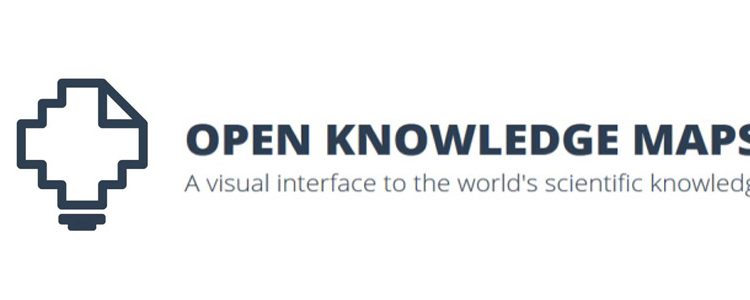Open Knowledge Maps: Visualizing Scientific Research

Whether a scientist is an expert in a field or a new student asked to design experiments on a new research topic, Open Knowledge Maps are indispensable visualization tools that quickly display the state of the world’s scientific knowledge. These Open Knowledge Maps, or OKMaps, use key research terms to quickly assess over 28 million articles and identify central themes and common research findings. In this way, these visualization tools allow for enhanced visibility of research articles and a chance for expert and novice researchers alike to enjoy a powerful knowledge visualization tool.
Visualizing the World’s Scientific Knowledge
Conventionally, researchers have used keywords and PubMed or Google Scholar to identify manuscripts relevant to a research topic. The long lists of search results, including sometimes thousands of articles, generated by such a process is burdensome to scientists who are quickly trying to be introduced to a topic. As an alternative, OKMaps provides a visual interface for the world’s scientific knowledge.
In bypassing long search result lists, OKMaps allow researchers to visualize groupings of manuscripts that share common words. After entering a few keywords from common research topics into the search bar at OKMaps, such as “cardiac stem cells,” groupings of manuscripts are quickly presented. Readers can then click on the various groups and learn about the findings presented in these articles.
Such a powerful tool allows researchers to always be updated about current research trends by giving them the ability to quickly visualize research topics, and identify reliable and repeatable research findings while separating out research that requires further validation or has not yet been repeated by other scientists. Moreover, OKMaps can also search through datasets and software to include unconventional data presentations in their knowledge visualization interface.
Furthermore, in a world of increasingly shrinking research budgets, the inclusion of open access articles and research in OKMaps visualization tools is a great asset! Curating manuscripts that are accessible at no costs to any researcher greatly accelerates the incorporation of research into working hypotheses or experimental models. A knowledge map tool that comprises open access research is a gateway to the world’s scientific knowledge.
Using OKMaps as a Tool for Knowledge
As a powerful tool for quickly visualizing research topics, Open Knowledge Maps curates millions of manuscripts and returns large amounts of data to its user. As any scientist who has handled large volumes of data will attest, this overabundance of data can sometimes be too much of a good thing. When using OKMaps, be sure to refine searches by indicating dates, titles, authors, or article types of interest. For example, if the search is for “cardiac stem cells,” perhaps a budding scientist would want to know only about research published after 2015.
Biomedical research scientists, in particular, will enjoy the OKMaps’ libraries of data—PubMed is already incorporated into its search engine! However, researchers in fields beyond biomedicine may languish in pursuit of guidance on their own research topic. For scientists in non-biomedical fields, traditional research engines may still be the most appropriate. However, since OKMaps is still in beta testing, meaning that it is being actively improved, scientists in non-biomedical research fields have the chance to provide feedback to the team of developers at OKMaps. In this way, not only will non-biomedical researchers enjoy greater access to visual research tools, but they can also help adapt such visual interfaces to the unique needs of their disciplines!
Visual Interface for a Global Research Community
These Open Knowledge Maps have been called the “Wikipedia of scientific knowledge”— and for good reason. Not only do researchers benefit from these knowledge map tools that curate millions of manuscripts and datasets, but so, too, do non-scientists. For example, policymakers can use the curated OKMaps to visualize research topics and make more scientifically valid decisions. The use of visualization tools through Open Knowledge Maps will greatly increase the accessibility of research to a broader audience. In doing so, the world’s scientific knowledge can become more widely known by experts, graduate students, and non-scientists alike!





